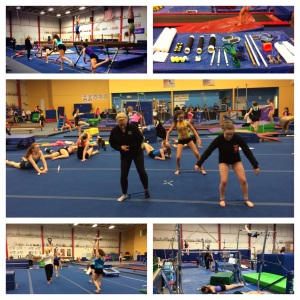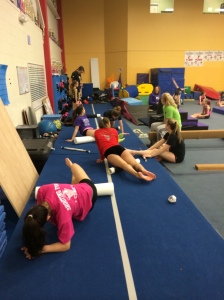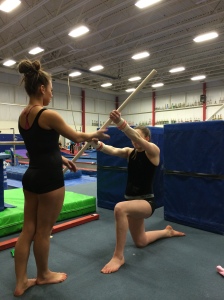This week I wanted to share an injury situation that recently came up with one of our gymnasts, and touch on some areas I’ve been thinking on the last few months. I really think people in gymnastics would benefit from hearing and thinking about her story. Don’t worry, both her mother and her said it was okay if I posted about it. After discussing it with them they agreed it was important information to share for other gymnasts and coaches out there. The situation is certainly a bummer as I will talk about, but I think there are some larger concepts behind the story that a lot of coaches/gymnasts/parents/medical professionals could learn from to help other gymnasts out there. I had another post lined up for this week but I thought this one was more important to get out. So, I did a little late night 2 am writing session (thank you Dunkin Donuts) and put this together for and early post this week.
Latest Entries »
There are certain areas that gymnasts can develop tightness and stiffness in, due to the nature of the sport, how we train, and other factors related to our daily movements. I know as soon as some people hear “gymnast” they assume the athlete has rubber band like mobility all over. Even though there are a lot of gymnasts who are pretty mobile, there are plenty of gymnasts who develop certain areas that tend to wind up. These same concepts also create excessive strain on other areas of the body that have to pick up the slack, often times becoming an area that breaks down and can become and injury. The lower back may be making up for tightness in the front of the hip during bridging skills, the shoulder may be making up for restricted extending movement in the middle spine during handstand work, and so on. Overtime if these areas are not addressed they can create large imbalances and compensations to occur, which can really throw off a gymnast’s mechanics.
Hey everyone,
Last month I got asked by my good buddy Dr. Dan Pope if I would help him out to work on a muscle up article for his website Fitness Pain Free. The article highlights some good mobility, stability, and progression work people can use to build a solid muscle up foundation while staying safe. Dan is a physical therapist, strength and conditioning coach, and quite the athlete who works a lot in the olympic weight lifting/strong man/Cross Fit world helping athletes prevent injury and increase performance. His website is a really great resource for people interested in theses areas, and it was a lot of fun doing a podcast interview a few weeks back. Dan and I have been working a lot together in the last few months trying to learn from each other, and his input for my work in the gymnastics world has been incredibly helpful. By using his contributions as well as other experts at NSCF Athletics, I have really changed up some of the strength and conditioning we use for our gymnastics program as well as pre-hab program. I wanted to share the collaboration article for anyone interested. Here’s the link to his site below,
Take care,
Dave
Dan’s Website – http://www.fitnesspainfree.com
The concept of the core is something that pops up in almost every gymnastics discussion, due to its role in skill work. In every gym you step foot into you’re bound to hear someone talking about tight cores, squeezing the belly hollow, and “doing abs” for conditioning. Every current or former gymnast reading this can vividly relate to the amazing but awful feeling of the seal stretch after what felt like 2 hours of hollow rocks. Granted this type of strength is really important for gymnastics, there is so much more information to the core relating to injury prevention and skill performance. In the last 6 months I have read an incredible amount of literature and books discussing what the core does for our every day lives, sports, and ways to train for safe movement. I have spent a lot of time processing the information and brewing up ideas about these ideas may change the way some people think about core training in gymnastics. Last week’s article about how a gymnast’s core problem can look like hamstring tightness got the most attention out of anything I have ever published. I wanted to follow that up and write about where my brain has been the last few months for core training in gymnasts. I also wanted to share some of the ways I have put these ideas into our pre-hab/strength programming for coaches and gymnasts to try out.
Something really interesting happened to me the other night at the gym during practice, and I wanted to share the story. One of my level 8’s told me that she has “really tight hamstrings” and that for some reason no matter how much she stretches her splits or pikes they never get better. I know this gymnast personally, and I know that she is one of the most flexible/hyper mobile girls on our team. So naturally I was thinking there had to be more to this. I decided to take a few minutes to break it down and figure out if it was really a hamstring mobility problem based on a lot of the PT information I’ve been reading/listening to lately. What ended up looking light tight hamstrings and a restricted pike stretch was really a core control /stability problem, and by doing some corrective work I was able to fix what looked like tight hamstrings in about 5 minutes. It all started out with her showing me a pike stretch, where she said she felt a lot of pulling in the back of her legs because of her hamstrings and she could not reach her hands to the floor.

































































